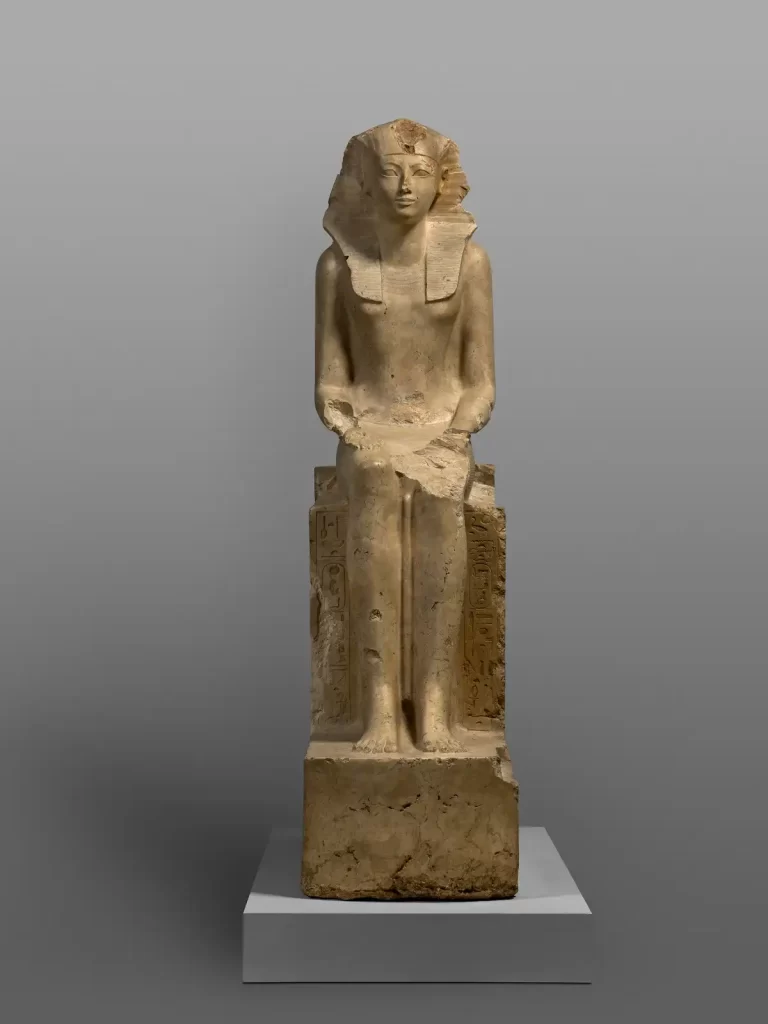
Queen Hatshepsut
[ez-toc]
Who is Queen Hatshepsut?
One of the greatest pharaohs of Ancient Egypt was Queen Hatshepsut, who was the fifth monarch of the 18th dynasty and whose name means “Foremost of Noble Women.” Hatshepsut was born in 1508 BC to King Thutmose I and his wife Queen Ahmose. King Ahmose was Hatshepsut’s maternal grandfather. She governed alongside her father despite the fact that the ancient Egyptians disapproved of women leading them and she learned a lot from him, which would account for why she went on to become one of the most successful rulers in Ancient Egypt’s history.
How She Got The Throne of Egypt?
The reign of Queen Hatshepsut began with her marriage to her half-brother Thutmose II in 1492 BC. Thutmose II was the son of Thutmose I from a young wife named Mutnofret. Due to his frail temperament and bad health, Hatshepsut, the King’s wife, ruled Egypt in his place. From her spouse Thutmose II Neferu-Ra, Hatshepsut only had one daughter. The second-highest position for a woman in ancient Egypt, behind the Queen, was given to Hatshepsut when she attained the status of God’s Wife of Amun. After the death of Thutmose II, the Egyptians rejected the idea of a woman leading them as a queen. As a result, Thutmose III, who was only two years old at the time, became king, and Hatshepsut served as regent to her stepson. Thutmose II’s child with his young wife Isis was named Thutmose III. Senenmut, Hatshepsut’s chief minister, was one of her powerful allies who assisted her to assume the role of the genuine pharaoh with all the power of a king. She gave orders for her representation to have a beard, musculature, and customary female garb.
Egypt under the Rule of Queen Hatshepsut
The era of Queen Hatshepsut was affluent and peaceful because she used trade to establish alliances with surrounding nations. She dispatched numerous seaborne commercial missions to the Atlantic Ocean and the Punt Kingdom, which brought back gold, baboons, myrrh, ebony, and other valuables. She also launched numerous military operations in Nubia and Syria. While she ran the country’s affairs, she appointed her stepson Thutmose III as a commander in several expeditions, defending the nation and enlarging the Egyptian empire. She married him to her daughter Neferu-Ra, who was given the title of God’s Wife of Amun.
Works of Queen Hatshepsut
Like all the great Egyptian Pharaohs, Queen Hatshepsut sought to immortalize her legacy by building a variety of amazing structures. She gave the go-ahead for the construction of the Deir El-Bahri Temple, which was planned by her chief minister Senenmut and is regarded as one of the most stunning temples in the entire world. The Hatshepsut temple contains incredibly magnificent carvings and artwork and is a stunning example of traditional ancient Egyptian architecture. The gods are revered in the temple, particularly the creator god Amun. She also remodels her father’s hypostyle hall, adding two obelisks, and orders the construction of the majority of the obelisks found at the El-Karnak temple. The marvelous unfinished obelisk was ordered by construction and was able to reveal a great deal about the construction methods of that era.
How Did Hatshepsut Die?
She passed away in 1458 BC when she was in her mid-forties; in her final days, she also suffered from diabetes and bone cancer in addition to an abscess that developed after a tooth extraction. So that they can be interred with her father in the Valley of the Kings, she enlarges her father’s tomb.



